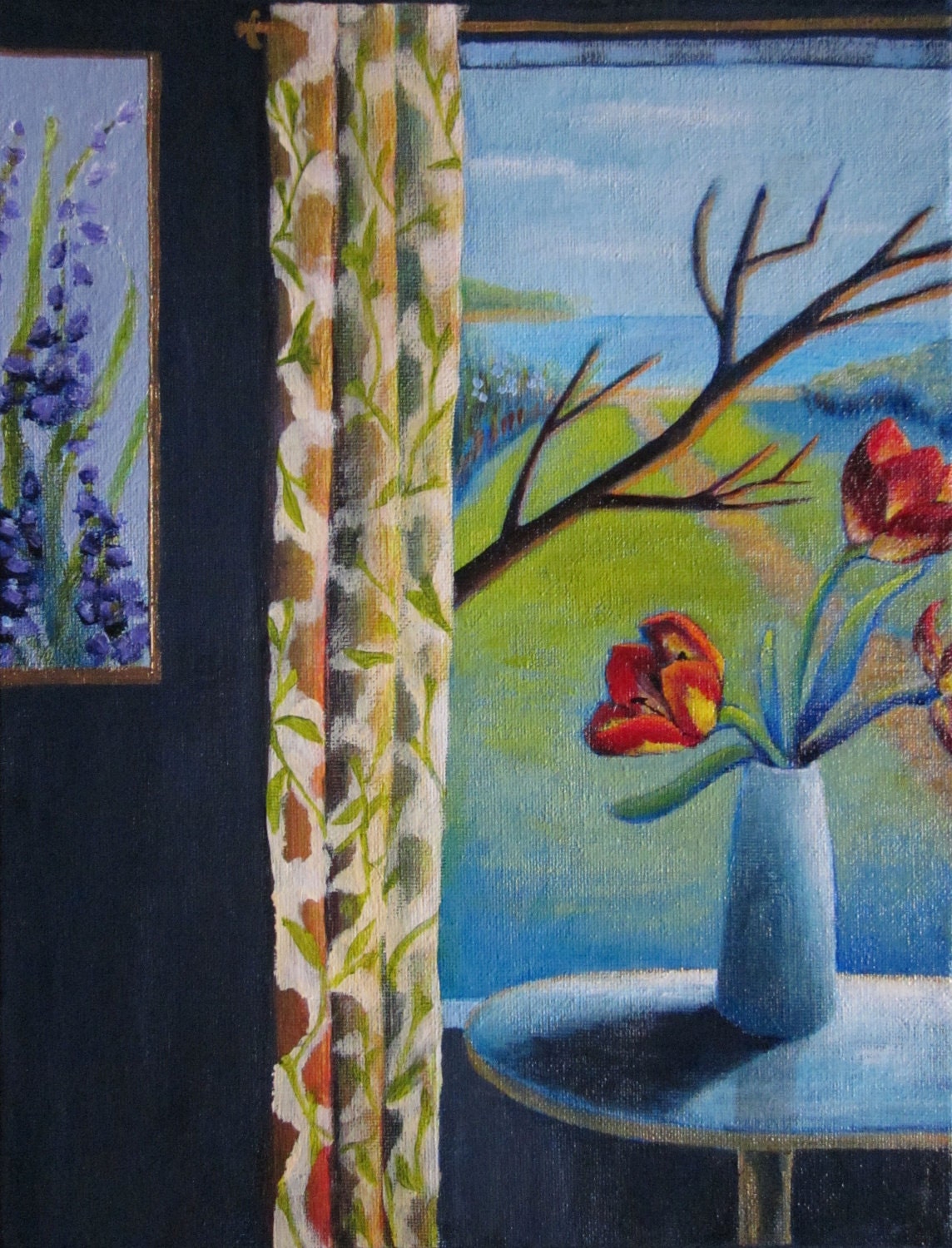Tips for working on a colored ground:
Acrylic painting techniques & ways to fix mistakes
Light colors on darker grounds--especially translucent light colors--can look dull. Yellows can look green against a blue because the layers optically mix. Here is one way to counteract this effect.
- Paint the part you want to be a bright color in white.

Close-up view of the differences in opacity - Let that dry. Then paint over with your light, bright color. You can even get neon yellow effects this way.

If you decide you don't want it that bright, you can always glaze over with another color. In this case, I mixed cerulean blue with a soft gel gloss so the paint dries translucent and has a slight texture to it. I layered this over the lower half of the purple shape. I made a similar, textured glaze of red to go over the red and yellow parts of the composition.
What did the glazes do?
The red glaze helped unify the red shapes, changing the neon yellow parts into orange. The blue glaze helped enrich the color of the purple shapes, making it more vibrant and varying the hue from top to bottom. Notice that I did not glaze over the top part of the purple shape with blue--that would have turned the yellow brushstrokes into a dull green. I also purposefully did not glaze over the thin yellow lines that cut across the composition. They retained their brightness without overpowering other colors.
How else can you use a mix of soft gel gloss and acrylic paint?
You can see the shiny, raised brushstrokes made with the same mix of soft gel gloss and paint that made the blue glaze. The difference is in how thickly it was applied and not smoothed out.












































